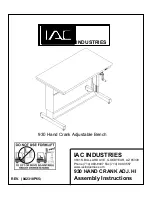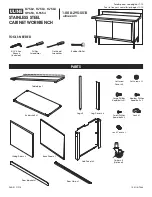
Rebuild
Rebuild processes recover data in failed drives by using other drives. If a free hot spare is available when one of
the RAID group drives has a problem, data of this drive is automatically replicated in the hot spare. This ensures
data redundancy.
Figure 10
Rebuild
Disconnects the failed drive from the ETERNUS
storage system and creates data from the drives
other than the failed drive and writes the data
into the hot spare.
Rebuild
Hot spare
Failed drive
Configures the hot spare in the RAID group.
Failure
RAID5 (No redundancy)
RAID5 (Redundant)
Disconnection
Note
When no hot spares are registered, rebuilding processes are only performed when a failed drive is
replaced or when a hot spare is registered.
IMPORTANT
•
Rebuild Speed
The priority of the rebuild operations with respect to host access can be specified. By setting "Rebuild
Priority" to "High", rebuild operations are given priority over host access and the performance of the
rebuild operations may improve.
However, it should be noted that when the priority is high and a rebuild operation is performed for a
RAID group, the performance (throughput) of this RAID group may be reduced.
Refer to "Modify RAID Group Parameters" in "ETERNUS Web GUI User’s Guide" for details.
2. Basic Functions
Data Protection
35
Design Guide
Summary of Contents for ETERNUS AF S3 Series
Page 204: ......
















































